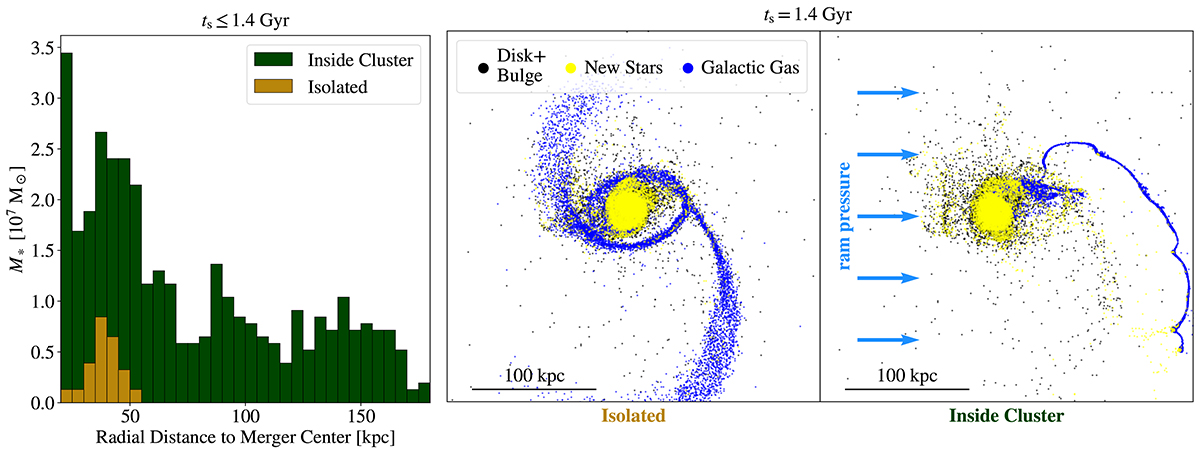Fig. 2.

Download original image
Environmental impact on star formation activity and morphology of a galaxy merger. Left: stellar mass that formed within 1.4 Gyr after the beginning of the simulation in tidal tails as a function of distance from the progenitor’s center of mass, at which the stellar particles were formed. The total formed stellar mass is summed within each radial bin. The cases for galaxy mergers outside and within of a cluster environment are plotted in light brown and dark green, respectively. Center and right: morphology of the isolated galaxy merger (center panel) 1.4 Gyr after the beginning of the simulation, compared to the same merger but in a cluster environment (right panel) according to C0 in Table 2. The old stellar component originally contained by the disk and bulge of the two merging galaxies is colored in black, while new stars that have formed since the beginning of the simulation are plotted in yellow. Blue markers show the position of gas particles initially contained in the disks of the galaxies, whereas the impact of the ICM is visualized by light blue arrows.
Current usage metrics show cumulative count of Article Views (full-text article views including HTML views, PDF and ePub downloads, according to the available data) and Abstracts Views on Vision4Press platform.
Data correspond to usage on the plateform after 2015. The current usage metrics is available 48-96 hours after online publication and is updated daily on week days.
Initial download of the metrics may take a while.


